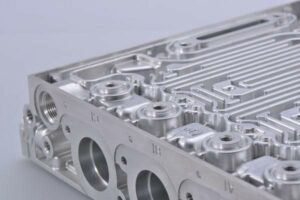Around 200 years ago, the first tools dedicated to the milling machine process appeared, and since then the process has advanced to the point of computerized control. Today, CNC milling is a machining process that uses computerized controls and rotating multipoint cutting tools to remove material and produce a custom-designed product or part.
By opting for CNC milling, the chances of error are reduced and you will have a better quality product. It is suitable for machining various materials including metal, glass, plastic, and wood. CNC machining services offer mechanical, electrical, chemical, and thermal processes.
Read on to learn more about CNC milling and how it works.
What is milling?
Milling is a form of machining that uses cutting tools to precisely shape workpieces. Most often, the cutters are placed on a moving tabletop.
Although milling was once a manual task, nowadays, most modern milling machines use a computer to control the process. However, there are still some situations when manual milling can be useful, although CNC milling offers accuracy, higher precision, and production rates. Keep in mind that manual milling requires a lot of experience and technical skill, and is cheaper than CNC milling. In addition, the user doesn’t need to worry about programming the machine.
On the other hand, CNC milling is extremely precise and you can be sure that every produced piece will be exactly like your CAD model.
Features of advanced CNC milling machines
Milling machines used to be operated manually in the past. Operators had to use multiple machines and different tools to make more complicated parts or products. They also had to adjust the settings of one machine to finish a small segment of the required work.
Nowadays, technology has advanced to allow for greater efficiency, flexibility, and speed even when working with more complex parts. Digital readouts and measuring devices have also helped improve the accuracy of CNC machining processes.

The starting phase of the CNC milling process
CNC uses computer technology to make precise cuts and shape stock material. The process of CNC milling is similar if not the same as the other types of CNC machining.
The creation of a 2D/3D CAD part design is the first step in CNC milling. After the model is converted to a CNC-compatible format, the operator prepares the CNC machine, which involves attaching the workpiece to the machine’s work surface.
Depending on the requirements and specifications of the milling application, the CNC milling process uses either horizontal or vertical CNC-enabled milling machines. The milling tools used include rotating multi-point (multi-toothed)cutting tools, such as drills and mills.
Lastly, the operator launches the program through the machine’s interface and the machine is ready for work.
The CNC milling process
CNC milling is different from manual milling. In this process, the machine feeds the workpieces by rotating the cutting tool, rather than against it.
Milling can be used as a secondary or final process to a machined part. The milling process defines or produces the part’s features such as slots, holes, and threads. This process can also be used to shape stock material from beginning to end. This is all achieved through the precise tool that cut small pieces, or chips, from the workpiece to create the desired shape and form.
That being said, a completed part usually requires multiple passes on the CNC machine to reach the required precision and tolerance. Multiple machine setups may be necessary to finish the fabrication of more complex parts.
After the milling operation has been completed and the part is manufactured to your specifications, the milled piece will enter a post-processing stage.
CNC milling machine operations
CNC milling is used for producing high accuracy, high tolerance parts in prototypes, and small to medium production runs. The versatility of this process allows it to be used for a variety of part features and designs including threads, slots, pockets, and chamfers. In addition, it is used in a wide range of industries including aerospace, medicine, etc.
Some of the most common CNC milling operations include face milling, plain milling, form milling, and angular milling. Besides these operations, milling machines can also be used to accomplish other machining operations, such as straddle milling, gang milling, profile milling, and gear cutting. In addition, since milling machines usually support the use of other machine tools besides milling tools, they can be utilized for reaming, tapping, and drilling.
Final thoughts
There are many companies that specialize in CNC milling, and finding the right fit for your business will mean that your CAD designs will be manufactured properly. Communicate with your CNC partner and inquire about the quality of their products and machines. If possible, take a trip to their factory and observe how the CNC process unfolds.






